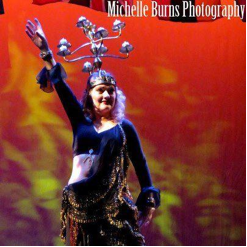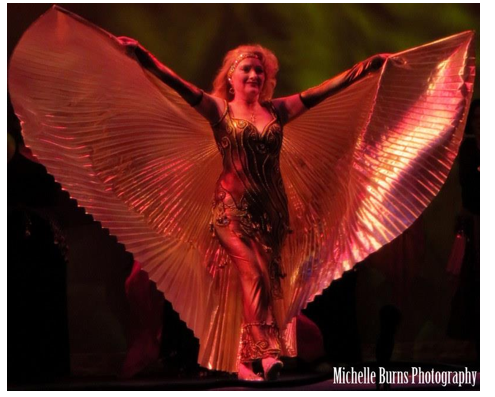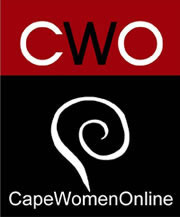CapeWomenOnline - Where Cape Women Shine
Your local venue for the women of Cape Cod to share their ideas, experiences and resources while inspiring each other in their life's journey
Inspire . Encourage . Network . Share
Middle Eastern Dance: A Blissful Path to Healing
by Khadija
Repressed joy, repressed sadness, repressed wildness. As women, we can identify with all of these feelings and still not know quite how to move them into our conscious awareness and give them a voice, a place in our own lives. These denied emotions keep us from being present in our lives, until we are initiated into the oldest dance known to humanity.
The dance began in Ancient Egypt and is an integral part of Egyptian culture to this day. When surrounded and supported by a safe circle of sisters in dance, a woman begins to give birth to her fullest self.
Over time, and in an effortless manner, all emotions are given free reign to surface and find their rightful place. The swaying figure eight motions, hip circles and shimmies, often accompanied by much laughter, stir something in a woman's soul.
The original 'core strengthening' exercise, 'belly dance' has been passed through generations because of the many benefits to a woman's body.
The pelvis and all levels of the abdominals are strengthened, allowing for an easy delivery. The movements even gently rock the baby into the ideal anterior position for birth.
When the new mother can make time to dance again, it quickly restores the proper tone and placement of internal organs that may have been displaced by the birth process.
In classes, students are encouraged to express themselves even in what they wear to class. From leggings and T-shirts to coin belts, scarves and swirling skirts, every class takes on the glamour and playfulness of a girl's night out.

Ask any woman who has fallen in love with 'belly dance' what it is about this dance that so captures her. The responses will range from 'I finally love and celebrate the body I have; exactly as I am,' to 'Nothing brings me more empowerment and ecstasy,' to simply 'This dance is my spiritual path. It heals me.'
The common misnomer of 'belly dance' cannot begin to describe the magic and mystery of this ancient dance. In Arabic, there is no word equivalent to belly dance. It is just called 'Raqs', dance. Or 'Raqs Sharqi', dance of the East.
It was understood that the entire body, mind, and spirit engaged in expressing the entrancing and complex music of the culture. There is even an Arabic word, 'Tarab', for the unique state of bliss brought about by Arabic music and dance.
It's uncertain how the rather silly but now entrenched misnomer came about, but it is assumed to have arisen during the French occupation of North Africa. Soldiers, fascinated by the local dance, began referring to it as 'Dance du Ventre', dance of the stomach or mid-section.
Successive occupiers during the annexation of North Africa were both outraged and wildly excited to watch exotic Eastern women move their bellies and hips. It was shocking to see women revel in their feminine curves at a time when European women were back home fainting from tight corsets.
Dismissive attitudes toward the dance simplify an intricate system of movement involving the control and isolation of every part of the body.
This ancient dance is for and about women, contrary to the assumption of it being for the 'entertainment of men'. Sure, men are entertained and appreciative of women doing most anything, but we dance for ourselves.
While Eastern tradition has always forbidden sex outside marriage, once married, a woman could fully embrace her feminine power and sexuality.
It is only in recent decades, with the rise of religious fundamentalism, that women's folkloric traditions have been pushed into the shadows. The shame and repression of all female experiences of life deny the joyful traditions shared by the people.
Fortunately, women of western cultures have enthusiastically embraced the dance as a means of expression and have kept it alive and even brought it to another level of creativity. Through this growing sisterhood of women from all parts of the world, the dance continues to surge in popularity.
The music of the East has many levels of complexity, instrumentation, tempo and emotion. An experienced dancer who has fully mastered the vocabulary of the dance no longer has to think about the steps. She is free to 'become' the music, allowing it to direct her movements.
The music speaks through the dancer in her gesture, attitude, and facial expression. Once the dance becomes second nature and the mind moves out of the way, the ensuing deeply relaxed state of awareness releases endorphins, leading to an entrancing state of bliss for both dancer and observer.
Young girls were taught early to move with ease in their bodies in anticipation of all the mysteries they would one day gain passage to as women. The movements at times mimic the sacred passage of birthing, preparing the body for this natural process.
 |
More than exercise, more than dance, Middle Eastern Dance, or 'Belly Dance' is a path of empowerment for women of all ages, shapes, sizes, and backgrounds. It is the only dance wherein the older a woman becomes, the more valuable her dance.
I am often asked if the movements tell a particular story, as in some other folkloric dance forms.
Yes, they do indeed. However, this dance being the story of each individual woman's life, there is no formulaic language of steps used to tell a story. A woman's unique expression becomes richer the more she lives.
A life well lived becomes a moving story, one that can offer strength and empowerment to all who take part.
Watch an older woman who has immersed her life in Middle Eastern music and dance, and you will be taken on a journey through her life. You will be shown a glimpse of how she has lived, what she has loved, what she has lost, how she has picked up her life and begun again, how you can as well. You will feel enriched and encouraged to live your own life from a place of joy in every precious moment, whatever your age.
Photographs courtesy of Khadija

Khadija (Professor Katrina Valenzuela) has been teaching Egyptian dance and culture since 1980 in the US and internationally.
She has also been in practice as a healer and intuitive medium for 30 years.
Since 1985, Khadija has designed and led sacred site tours to Egypt. Her research has led her to 38 countries where she has presented seminars and workshops.
She teaches at Ballet Works in Yarmouth, Centerville Yoga Center, and offers a 3-credit course at Cape Cod Community College where she also teaches Conversational Arabic.
Khadija produces an educational cable TV show, 'Transformations', which is shown twice weekly throughout The Cape. She writes for local publications and is working on a biography of her lifetime of spiritual adventure travels.
Khadija is available for classes and private coaching in all aspects of Egyptian dance, culture, and language.
Contact:
dancerkat@aol.com or www.transformationscenter.com
Her performing troupe schedule can be found at
www.troupe-isis.com


